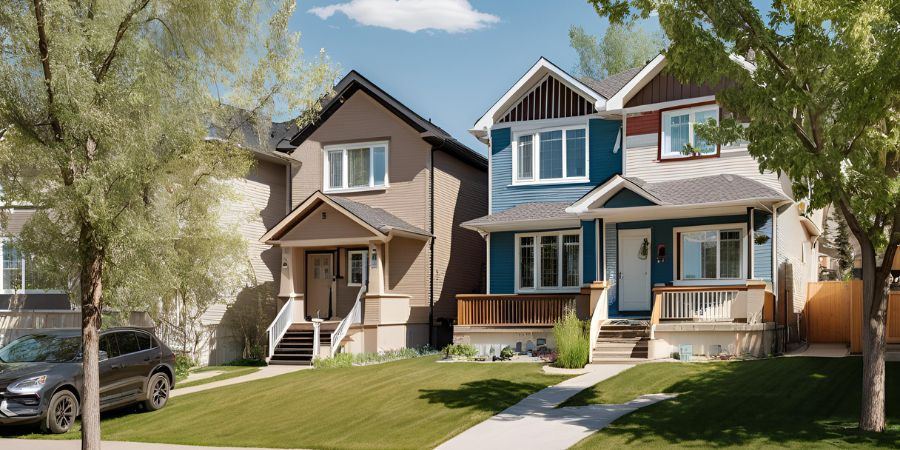Over the last decade, Edmonton’s real estate market has experienced significant fluctuations, influenced by economic shifts, population growth, and changing buyer preferences. Understanding the trends in Edmonton house prices last 10 years can provide valuable insights for homeowners, buyers, and investors. This article delves into the key factors that have shaped Edmonton’s housing market and highlights the notable price trends from 2013 to 2023.
The Evolution of Edmonton House Prices
1. 2013-2015: A Period of Stability
In the early 2010s, Edmonton’s housing market was characterized by relative stability. The city experienced moderate price growth, driven by a balanced demand-supply dynamic. The average house price in 2013 hovered around $350,000, with incremental increases over the next few years.
Factors Influencing Stability:
- Economic Growth: The oil and gas sector, a major driver of Alberta’s economy, was performing well, leading to job creation and steady population growth.
- Affordable Housing: Compared to other major Canadian cities, Edmonton offered affordable housing options, attracting first-time buyers and families.
2. 2015-2017: Impact of the Oil Price Crash
The period from 2015 to 2017 marked a significant downturn in Edmonton’s housing market, largely due to the global oil price crash. As oil prices plummeted, Alberta’s economy faced a severe downturn, resulting in job losses and reduced consumer confidence.
Market Effects:
- Decline in House Prices: The average house price dropped from approximately $370,000 in 2014 to around $350,000 in 2016.
- Increased Inventory: With fewer buyers in the market, the number of listings increased, leading to a buyer’s market.
3. 2017-2019: Gradual Recovery
By 2017, Edmonton’s real estate market began to show signs of recovery. Although the recovery was slow, there was a gradual increase in house prices as the economy started to stabilize.
Key Drivers of Recovery:
- Diversification Efforts: Efforts to diversify Alberta’s economy beyond oil and gas began to bear fruit, leading to job creation in other sectors such as technology and healthcare.
- Renewed Buyer Interest: Lower interest rates and improved economic conditions encouraged more buyers to enter the market.
4. 2020-2021: The COVID-19 Pandemic Effect
The onset of the COVID-19 pandemic in 2020 brought unprecedented challenges to the global economy, and Edmonton’s housing market was no exception. However, the pandemic also led to some unexpected trends in the real estate sector.
Market Dynamics During the Pandemic:
- Initial Slowdown: In the early months of the pandemic, there was a significant slowdown in real estate activity due to lockdowns and economic uncertainty.
- Surge in Demand: As restrictions eased, there was a surge in demand for housing, driven by low-interest rates and a desire for more spacious living environments. This led to a sharp increase in house prices.
- Price Growth: By the end of 2021, the average house price had risen to approximately $400,000, marking one of the fastest periods of price growth in the decade.
5. 2022-2023: Market Stabilization
In the aftermath of the pandemic-driven surge, Edmonton’s housing market began to stabilize. While prices remained elevated compared to pre-pandemic levels, the rate of growth slowed down.
Current Trends:
- Steady Demand: Demand for housing in Edmonton remained steady, supported by a growing population and continued low-interest rates.
- Balanced Market: The market shifted towards a more balanced state, with neither buyers nor sellers having a significant advantage.
- Sustainable Growth: The average house price in 2023 reached around $430,000, reflecting sustainable growth rather than the rapid increases seen during the pandemic.
Factors Influencing Edmonton’s Housing Market Over the Decade
1. Economic Conditions
The health of Alberta’s economy, heavily influenced by the oil and gas sector, played a crucial role in shaping Edmonton’s real estate market. Periods of economic growth led to increased housing demand, while downturns resulted in price declines and reduced market activity.
2. Population Growth
Edmonton’s population growth over the decade contributed to increased demand for housing. The city’s attractive quality of life, job opportunities, and relatively affordable housing options made it a popular choice for new residents.
3. Interest Rates
Interest rates significantly impacted Edmonton house prices. Lower interest rates made borrowing more affordable, encouraging more buyers to enter the market and driving up demand.
4. Government Policies
Government policies, including changes in mortgage rules and incentives for first-time homebuyers, influenced market dynamics. These policies aimed to ensure a stable and sustainable housing market.
Conclusion
Over the past decade, Edmonton’s housing market has experienced periods of stability, downturns, and rapid growth. The city’s real estate landscape has been shaped by various factors, including economic conditions, population growth, and government policies. Understanding these trends is essential for anyone looking to buy, sell, or invest in Edmonton’s real estate market. As we look to the future, Edmonton house prices are expected to continue their gradual and sustainable growth, making it an attractive market for both residents and investors.

